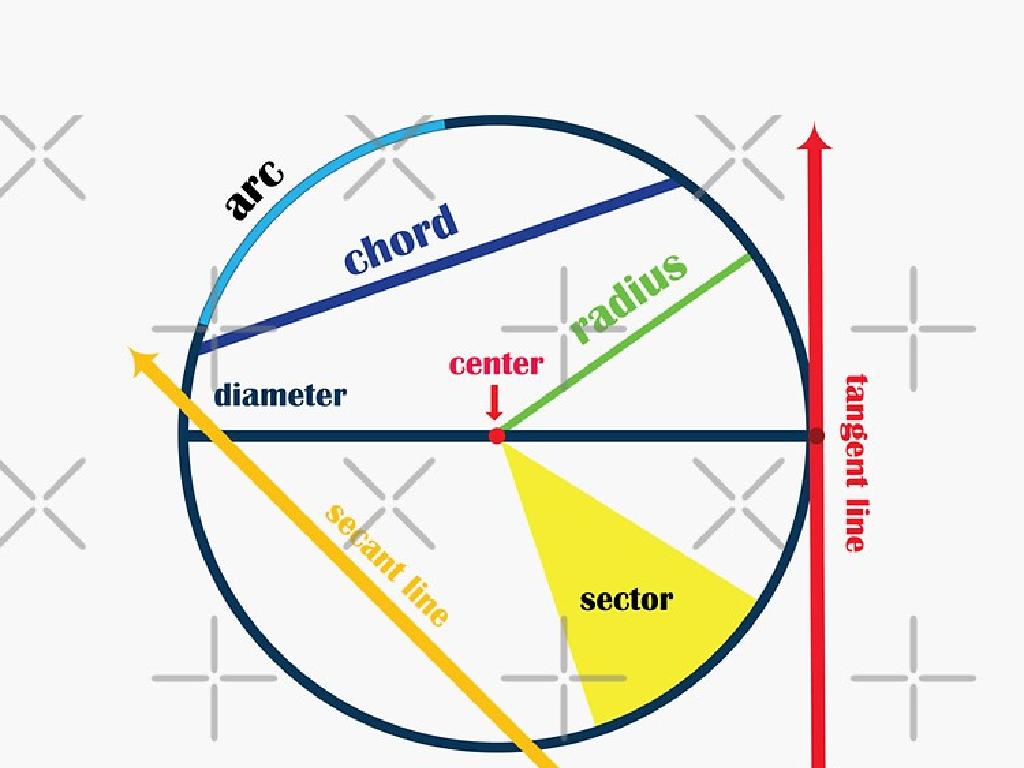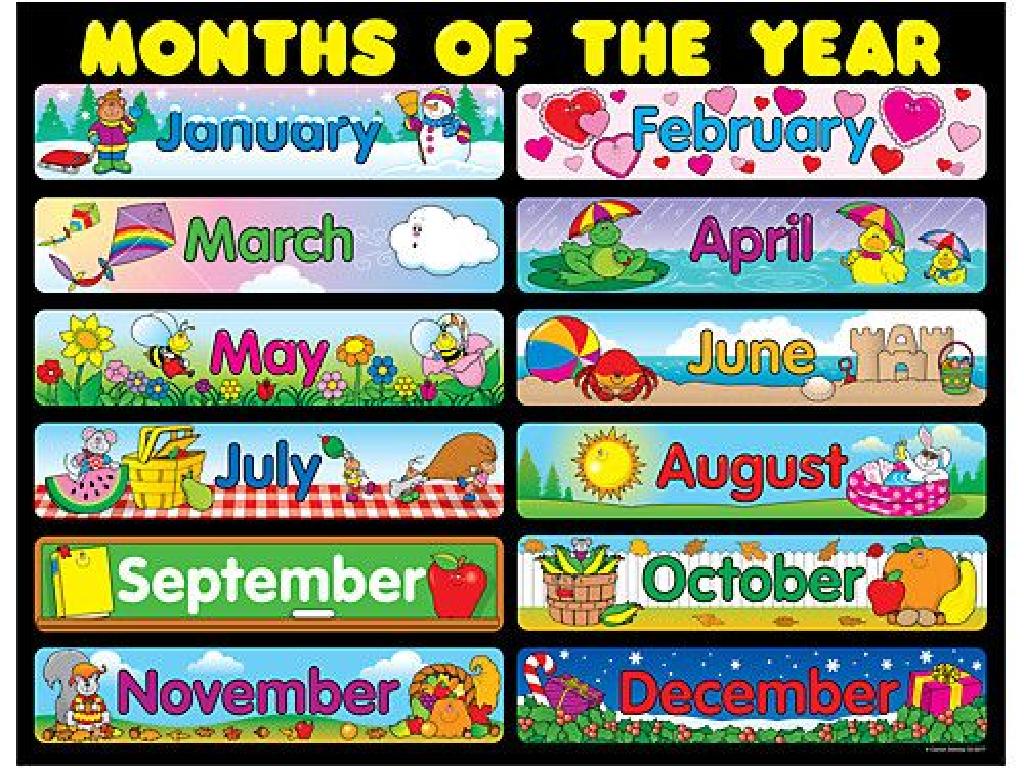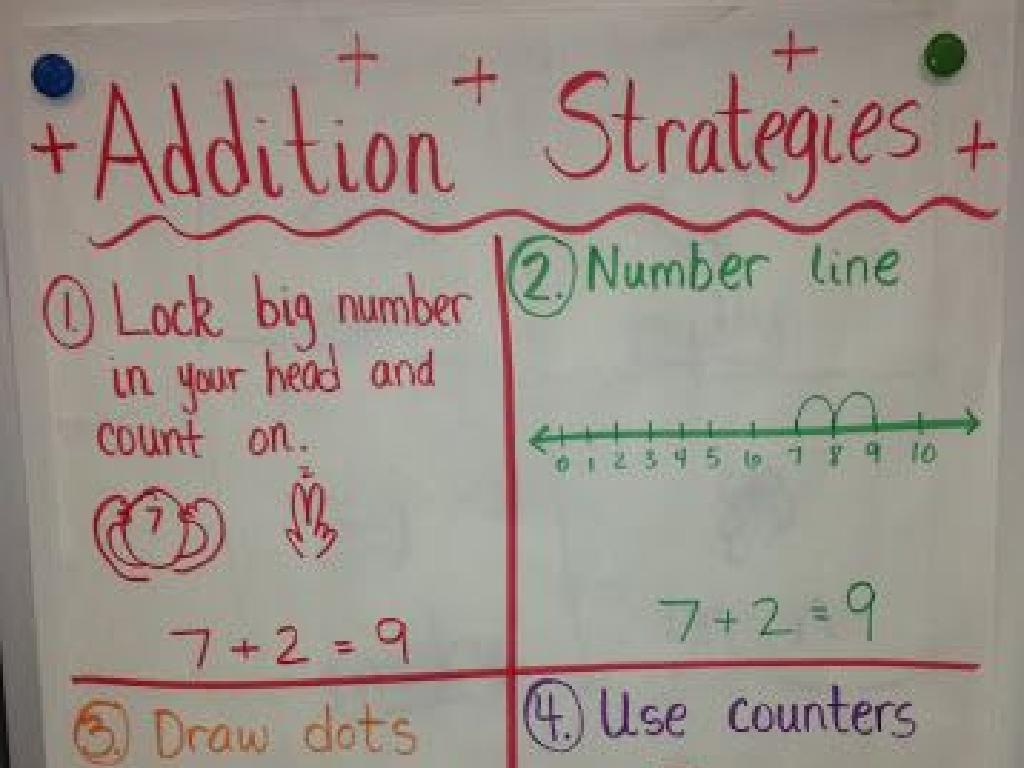Identify Time-Order Words
Subject: Language arts
Grade: Third grade
Topic: Linking Words
Please LOG IN to download the presentation. Access is available to registered users only.
View More Content
Time-Order Words in Linking Words
– Discovering Linking Words
– Today’s focus: Time-Order Words
– Words like ‘first’, ‘next’, ‘then’, ‘finally’
– Why Time-Order Words Matter
– They help us understand the sequence of events
– Examples of Time-Order Words
– ‘First’ we wake up, ‘then’ we eat breakfast
|
This slide introduces the concept of linking words, with a focus on time-order words, to help students understand how to sequence events in writing. Linking words act as bridges between ideas, making our communication clearer. Time-order words are especially important because they help us tell the order in which things happen, which is crucial for storytelling, explaining processes, or giving instructions. Provide examples like ‘first’, ‘next’, ‘then’, ‘after that’, and ‘finally’ to illustrate how these words function. Encourage students to think of their daily routines or favorite stories to identify time-order words. In the next class, we can have activities where students create sentences using time-order words to describe sequences of events.
Time-Order Words in Sequences
– What are time-order words?
– Words that signal the order of events
– Examples: first, next, then, finally
– ‘First’ we wake up, ‘next’ we eat breakfast
– Purpose of time-order words
– They arrange events in a clear sequence
– Practice using time-order words
– We’ll create sentences using these words
|
Time-order words are important for understanding the sequence in which events occur. They are like signals in a story that guide us through the timeline of events. Common examples include ‘first’, ‘next’, ‘then’, and ‘finally’. These words help us to follow along with a story or instructions by showing us the order of actions or steps. During the class, we’ll practice identifying these words in texts and using them to write our own sequences of events. Encourage students to think of simple daily routines or instructions they can describe using time-order words.
Building Stories with Time-Order Words
– Let’s create a story together
– Spot the time-order words
– Words like ‘first’, ‘next’, ‘then’, ‘finally’
– Understand story flow
– Time-order words guide us through the events
– Practice using time-order words
– We’ll write sentences using time-order words
|
This slide is designed to engage third-grade students in understanding the use of time-order words to create a coherent narrative. Begin by collaboratively constructing a simple story with the class, encouraging students to contribute ideas. As the story develops, highlight and identify the time-order words used to sequence events (e.g., first, next, then, lastly). Discuss how these words help the listener or reader follow the progression of the story. After the discussion, give students the opportunity to practice crafting sentences that incorporate time-order words, reinforcing their understanding of how these words contribute to the flow of a narrative. This activity will help students recognize the importance of time-order words in storytelling and improve their writing skills.
Time-Order Words in Our Lives
– Daily use of time-order words
– Words like ‘first’, ‘next’, ‘then’, ‘finally’ organize our day
– Morning to bedtime routine examples
– ‘First I wake up, then I brush my teeth, next I get dressed, finally I go to school.’
– Share your own daily sequence
– Think of your day and use time-order words to describe it
|
This slide aims to help students recognize and use time-order words, which are essential for describing sequences of events. Start by explaining how these words help us talk about our daily activities in the right order. Provide clear examples from a typical day, from waking up to going to bed, using time-order words. Encourage students to think about their routines and prepare to share them using time-order words. This exercise will enhance their understanding of sequencing and narrative skills. For the activity, students can write or draw their routines with time-order words and present them to the class, fostering both language and public speaking skills.
Activity Time: Story Sequencing
– Create a story with picture cards
– Choose cards that show a sequence of events
– Use time-order words correctly
– Words like ‘first’, ‘next’, ‘then’, ‘finally’
– Present your story to the class
– Share your story using the time-order words
|
This activity is designed to help students understand the concept of time-order words and how they are used to sequence events in a story. Provide students with a set of picture cards depicting different events. Instruct them to arrange the cards in a logical order and craft a story around them. Emphasize the use of time-order words such as ‘first’, ‘next’, ‘then’, and ‘finally’ to link the events. Once the students have created their stories, have them present to the class, using the time-order words to guide their storytelling. This will reinforce their understanding and give them practice in using these important linking words.
Wrapping Up: Time-Order Words
– Why time-order words matter
– They help us understand the sequence of events.
– Time-order words in stories
– They clarify when things happen, making stories easier to follow.
– Practice using time-order words
– The more we use them, the better our storytelling becomes.
|
As we conclude, let’s remember that time-order words are crucial for clear communication, especially when telling stories or explaining events. They help us understand the sequence in which things happen. By using words like ‘first’, ‘next’, ‘then’, and ‘finally’, we can follow the plot of a story more easily. Encourage students to keep practicing these words in their writing and daily conversations. You can suggest that they retell a story from a book or their day using time-order words to reinforce their understanding. Remember, the more they use these words, the more naturally they’ll be able to organize their thoughts and convey information effectively.
Class Activity: Time-Order Treasure Hunt
– Find objects in the classroom
– Describe the sequence with time-order words
– First, next, then, after that, finally
– Write a paragraph using those words
– Combine the time-order words with your sequence
– Share your adventure with the class
|
This activity is designed to help students understand and practice using time-order words, which are important for describing sequences of events. Students will search for objects around the classroom and use time-order words such as ‘first’, ‘next’, ‘then’, ‘after that’, and ‘finally’ to describe the order in which they found the items. They will then write a short paragraph recounting their treasure hunt using the time-order words, which will help reinforce their understanding. Encourage creativity and make sure they understand that these linking words help make their stories clear and easy to follow. After writing, students can share their paragraphs with the class, providing an opportunity to practice speaking skills and to learn from each other’s use of time-order words.





